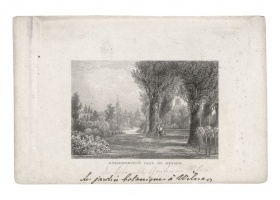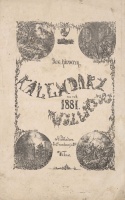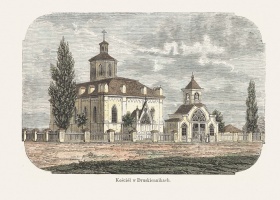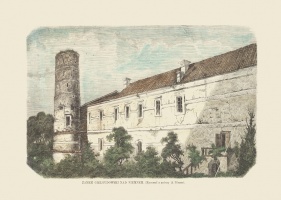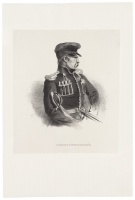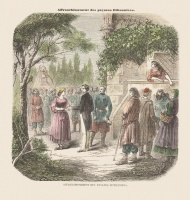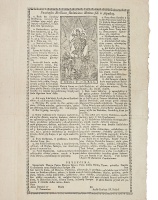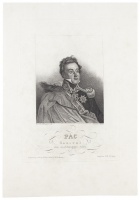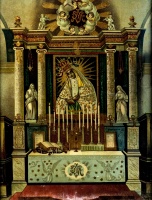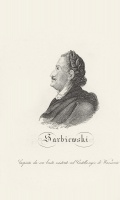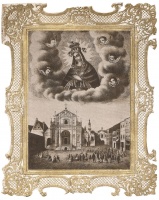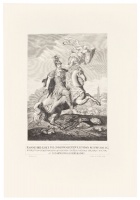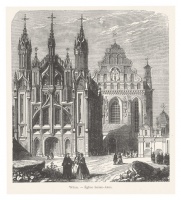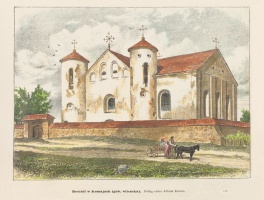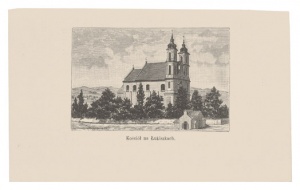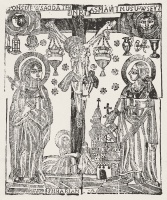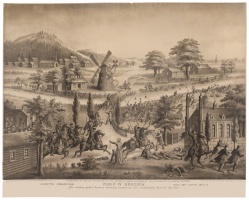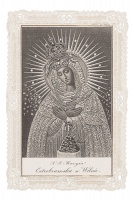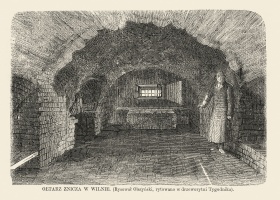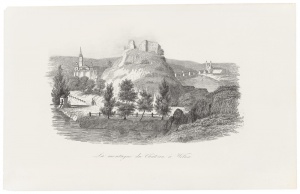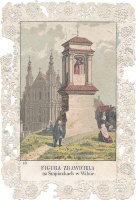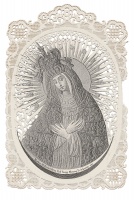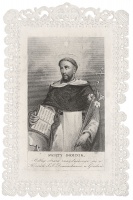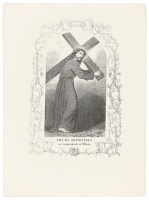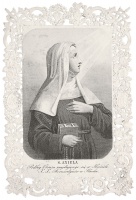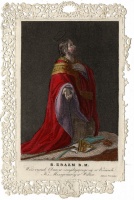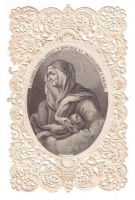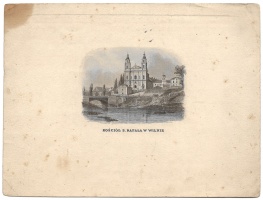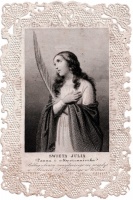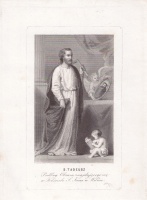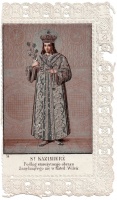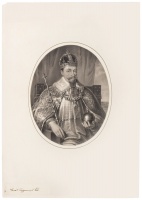
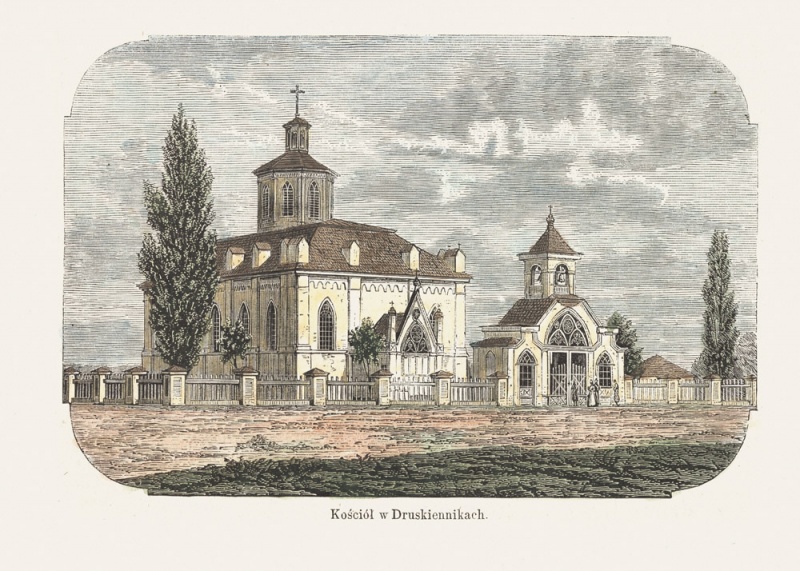

Druskininkai church
| Author: |
Unknown artist |
| Created: | 1867 |
| Material: | paper |
| Technique: | coloured woodcut |
| Dimensions: | 9.20 × 14 cm |
Periodical TYGODNIK ILLUSTROWANY (Warsaw).
Hand-coloured woodcut after Alfred Izydor Römer.
Druskininkai became a popular and fashionable spa town in the 19th century, with hundreds of visitors flocking from different parts of Lithuania, mostly from Vilnius, and also from towns further away in Poland and Russia. As the number of summer vacationers increased, people became aware of the lack of Catholic churches. Although it was not easy to get permission to build a new one, a church was nevertheless built, with money donated by Catholics, mostly from Vilnius, who frequented Druskininkai and stayed in the treatment centres. The cornerstone of the church was blessed on 15 July 1841. The small brick church was built in the ‘Gothic style’ in three years, but it took rather longer to complete as funding was scarce. The church was consecrated on 15 May 1858, in a service conducted by a priest from Vilnius. The parishioners later had the churchyard enclosed by a wooden fence with stone gates. The building of the church in Druskininkai in spite of Imperial Russia’s anti-Catholic stance demonstrates that human efforts and shared goals can succeed.
Alfred Izydor Römer (1832–1897), who immortalised the church in Druskininkai, sought to render the structure with great precision, including the main stone volume, its wooden tower, and the impressive gates into the churchyard with small statues.
The engraving was reproduced along with two other views of the town, probably by the same artist, in the Warsaw periodical Tygodnik Illustrowany (1868, No 34, p. 88) as an illustration to a short essay by A. Soltan on Druskininkai.
After the present church in Druskininkai was built in the first half of the 20th century, the memory of the earlier one survived only in written and visual records.
Text author Rūta Janonienė
Source: Law firm Valiunas Ellex art album RES PUBLICA (2018). Compiler and author Rūta Janonienė






